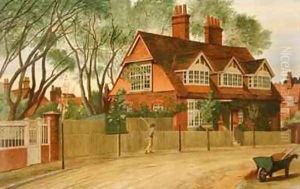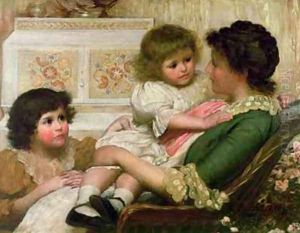Henry Marriott Paget Paintings
Henry Marriott Paget was an English illustrator known for his contributions to late Victorian and Edwardian periodicals, books, and other publications. Born in 1856, he was part of the Paget family, which included several notable artists of the time. His brothers, Sidney Paget and Walter Paget, were also distinguished illustrators, with Sidney being famously known for his depiction of Sherlock Holmes in The Strand Magazine. This artistic environment undoubtedly influenced Henry and helped shape his career in the arts.
Paget's work is characterized by its detailed and dramatic narrative style, often focusing on historical or romantic themes. He was adept at both black and white illustration and color work, employing a variety of techniques to suit the narrative and publication format. Throughout his career, Henry Marriott Paget contributed illustrations to prestigious periodicals such as The Illustrated London News, The Sphere, and others, which were the primary mediums for mass visual communication at the time.
In addition to periodicals, Paget illustrated numerous books, providing imagery for stories and poems that covered a broad range of genres. His illustrations for Arthur Conan Doyle's works, though less known than those of his brother Sidney, contributed to the visual culture surrounding late 19th and early 20th-century literature. Paget's ability to capture the essence of a narrative in a single image or a series of images made his work sought after by publishers and loved by readers.
Despite the prominence of his work during his lifetime, Henry Marriott Paget's contribution to the field of illustration has been somewhat overshadowed by his brother Sidney's iconic Sherlock Holmes illustrations. Nevertheless, his work remains an important part of the visual lexicon of the period, offering insight into the aesthetics, values, and storytelling preferences of the late Victorian and Edwardian eras. Henry Marriott Paget passed away in 1936, leaving behind a legacy of diverse and rich illustrations that continue to be studied and appreciated by art historians and enthusiasts alike.

